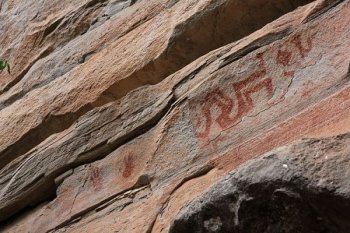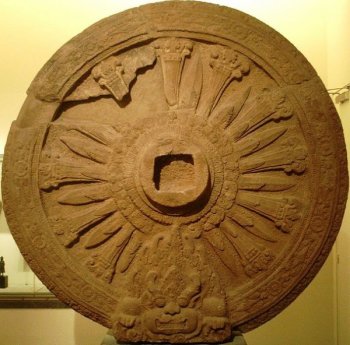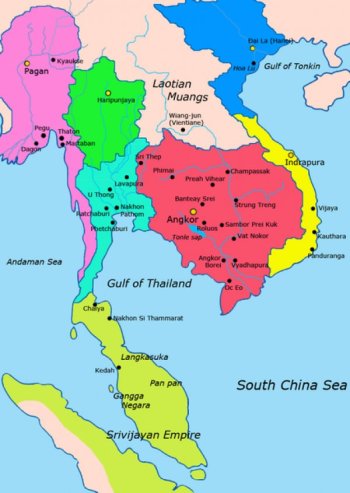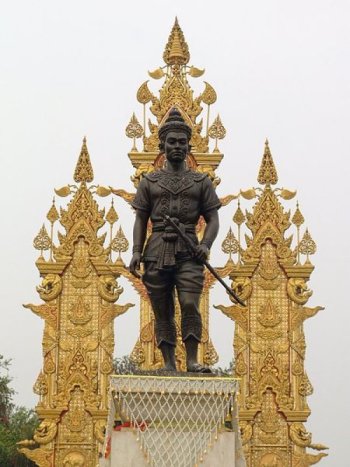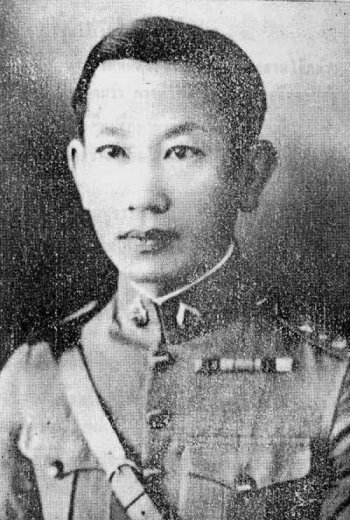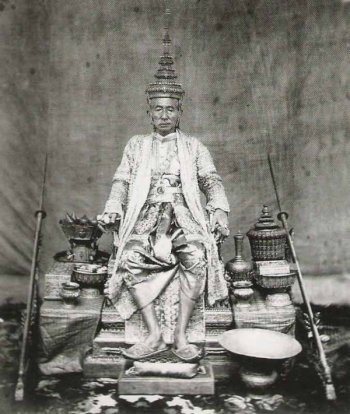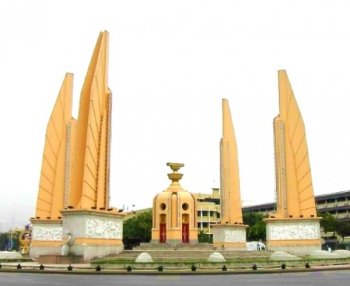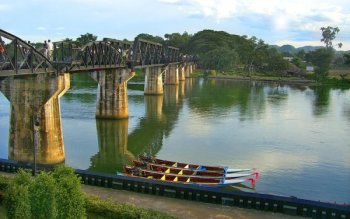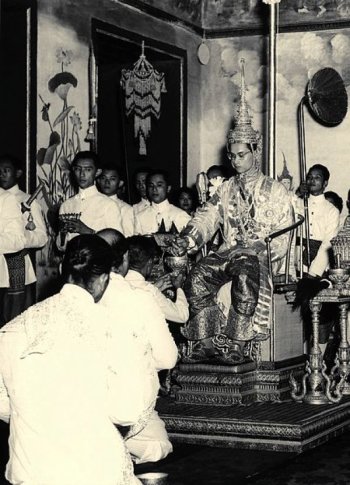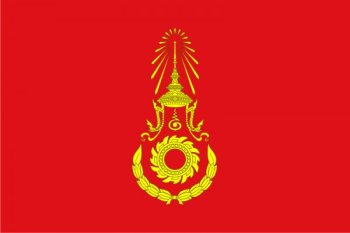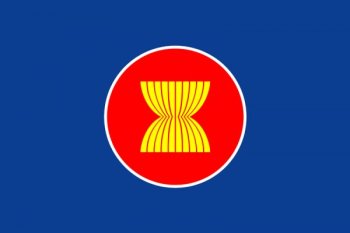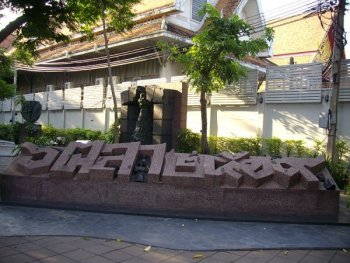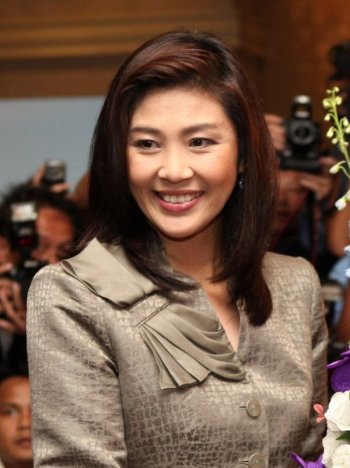History: Historical Timeline
Prehistory
| Date | Event |
|---|---|
| 1,000,000–500,000 BCE | Homo erectus lives in the region later called Thailand. The species inhabits caves near water sources, and uses fire and stone artifacts. |
| 10,000–4000 BCE | Hoabinhian people reside in riverside cave settlements, and make cave paintings. |
| 4000–2500 BCE | Humans build permanent dwellings, cultivate rice and other crops, keep domestic animals, and make pottery. |
Early Settlements
| Date | Event |
|---|---|
| 2500–500 BCE | Settlers make copper vessels, ornaments, bells, hunting weapons, fishing hooks, and agricultural implements. They also make fine pottery with red abstract patterns. |
| 500 BCE–600 CE | People develop moated settlements, use iron implements and metal vessels, and make sophisticated earthenware and animal figurines. |
Early Kingdoms
| Date | Event |
|---|---|
| 500–1299 CE | Dvaravati, a federation of Mon city-states, is influenced by Indian culture, and has trading links with other ancient civilizations. The Khmer Empire extends its rule over Dvaravati. The city–states under Khmer suzerainty later form the Lavo kingdom, and the rest form the Supannabhum kingdom. |
| 648–1388 | King Kalavarnadish founds Saruka Lavo city, which expands into the Lavo kingdom. It becomes a Khmer vassal in the 900s. |
| 650–1292 | Queen Jamadhevi of Lavo becomes the ruler of the northwestern Mon kingdom of Haripunjaya, which comes under Khmer influence in the 900s and is continually at war with Dvaravati. |
| 638–1292 | The Ngoenyang federation of city-states evolves after an earthquake destroys the earlier Singhanavati. |
| 1292–1775 | Mangrai, the ruler of Ngoenyang, unites other Thai states to form the Lanna kingdom. He conquers Haripunjaya in 1292, and builds new capital Chiang Mai in 1296. The kingdom faces continual Burmese and Siamese incursions. |
Kingdom of Sukhothai
| Date | Event |
|---|---|
| 1238–1257 | Sri Indraditya, a Tai vassal of the Khmer Empire, seizes Sukhothai city and declares independence. |
| 1279–1298 | Ramkhamhaeng expands the kingdom of Sukhothai, develops the Thai script, and makes Buddhism the state religion. After his death, tributary states break away. |
| 1371–1378 | Borommaracha I of Ayutthaya invades and makes Sukhothai a tributary. |
| 1438 | As heir to both the King of Sukhothai and the King of Ayutthaya, Ramesuan unites the two kingdoms. |
Kingdom of Ayutthaya
| Date | Event |
|---|---|
| 1351 | March 4. Ramathibodi I becomes the first King of Ayutthaya, after marriage alliances with the Lavo and Supannabhum kingdoms. Thirty-two Hindu-Buddhist Kings follow, their reigns fraught with wars, invasions, intrigues, and infighting. |
| 1431 | Borommaracha II plunders Angkor Thom, causing the Khmer to withdraw further south. |
| 1511 | Portuguese envoy Duarte Fernandez arrives at the court of Ramathibodi II. |
| 1548–1569 | Ayutthaya faces three sieges by the Burmese Taungoo Dynasty, and becomes a Burmese vassal. |
| 1590–1605 | Naresuan frees Ayutthaya from Burmese control. |
| 1656–1688 | King Narai exchanges envoys with King Louis XIV and French influence grows in Ayutthaya, particularly after the 1687 Anglo-Siamese conflict; Narai evicts the British East India Company for blockading Mergui port. Siamese nobles resent French political and religious interference. |
| 1688–1703 | Narai's successor, Phetracha, expels the French and severs relations with the West. |
| 1759–1767 | Ayutthaya faces two sieges by the Burmese Konbaung Dynasty. In the first, the Burmese withdraw. In the second, they plunder and burn Ayutthaya. |
Thonburi Kingdom
| Date | Event |
|---|---|
| 1768–1782 | Phraya Taksin, the governor of Tak, seizes Ayutthaya back from the Burmese. As the city is in ruins, he establishes a new capital, Thonburi. He consolidates his new kingdom by bringing many Siamese, Malay, Cambodian, Laotian, Vietnamese, and Burmese provinces under his sway, but becomes increasingly maniacal with continual warfare. The powerful military leader and Mon noble, Buddha Yodfa Chulaloke, deposes him in 1782. |
The Chakri Dynasty
| Date | Event |
|---|---|
| 1782–1809 | Buddha Yodfa Chulaloke (Rama I) establishes the Chakri Dynasty, makes Bangkok his capital, and rules for 27 eventful years. He intervenes in the politics of Vietnam, Laos, and Cambodia, successfully repels Burmese invaders, accepts tribute from the Malay Sultans, undertakes major building projects, encourages literary works, codifies Thai law, and lays a firm administrative foundation that benefits his successors. |
| 1809–1824 | Buddha Loetla Nabhalai (Rama II) is a great patron of literature and art. His reign is mostly peaceful, with the exceptions of a bid for the throne by his nephew and the last Burmese incursion into Siam, both summarily crushed. |
| 1824–1851 | Nangklao (Rama III) suppresses the rebellious tributary states of Vientiane and Kedah, supports a pro-Siamese monarch in Cambodia, signs the Burney Trade Treaty with the British and the Treaty of Amity and Commerce with the United States, and understands clearly the threat from Western imperialism. |
| 1851–1868 | Mongkut (Rama IV) modernizes Siam along Western lines, and encourages educational reforms, commercial activities, industrial growth, and infrastructure improvement. He signs the 1854 Bowring Treaty with the British, abolishing former trade barriers. |
| 1868–1910 | Chulalongkorn (Rama V) implements tax and administrative reforms, modernizes the army and legal system, abolishes slavery, and builds Siam's first railway, electric power plant, and plumbing system. The king maintains Siamese independence, but, following the 1893 Franco-Siamese War and the 1904 Entente Cordiale, concedes Laos and the Champassak and Sayaboury provinces to France. Following the 1909 Anglo-Siamese treaty, he allows the British to have Penang and four southern Malay states. In 1902–1903, the Siamese government crushes the separatist Shan Rebellion in northern Siam. |
| 1910–1925 | British-educated Vajiravudh (Rama VI) follows a progressive, nationalist, and modernist policy. His personal absolutism and his zeal for his paramilitary Wild Tiger Corps, however, lead to the failed 1912 Palace Revolt; discontented army officers attempt to assassinate him and form a republic. He supports the Allies in the First World War, and renegotiates previous unequal treaties. In 1924, he alters the succession law to allow only his own full-blooded relatives to succeed him. |
| 1925–1935 | King Prajadhipok (Rama VII) inherits problems from his late brother's economic mismanagement, and the Great Depression exacerbates these further. |
| 1932 | April 6. The Chakri Dynasty celebrates its 150th anniversary. June 24–29. The Khana Ratsadon (People's Party) topples the Chakri Dynasty with a bloodless coup. The king agrees to a Constitutional Monarchy, but political disagreements flare up between him and the Khana Ratsadon. |
| 1933 | March. The King rejects a draft economic plan with socialist points. Prime Minister Phraya Manopakorn Nittada dissolves the National Assembly and exiles the drafter Pridi Banomyong. June 20. General Phraya Phahon Phon Phayuhasena, Commander of the Royal Siamese Army, seizes power, recalls Pridi, and exiles Manopakorn. October 11. Prince Bowodarej, a former Defense Minister, marches on Bangkok with royalist provincial troops, rebelling against the Phahon government for disrespecting the King, recalling Pridi, and fostering communism. The King tarnishes his reputation by leaving Bangkok and not intervening in the conflict. Commander Plaek Phibunsongkhram's troops crush the Bowdarej Rebellion, and Prince Bowodarej flees to French Indochina. |
| 1934 | October 14. The King threatens to abdicate over constitutional amendments curtailing royal privileges. The government does not budge. |
| 1935 | March 2. King Prajadhipok abdicates and exiles himself to Britain. The Cabinet, on Pridi Banomyong's advice, makes Ananda Mahidol (Rama VIII), Prajadhipok's young, Switzerland-based nephew, the new King. |
| 1938 | September 11. Phibunsongkhram replaces General Phraya Phahon Phon Phayuhasena as prime minister. |
| 1939 | January 29. Phibunsongkhram carries out the Songsuradet Rebellion—also known as the Rebellion of 18 corpses—to purge 52 political opponents, executing 18 of them. June 23. Phibunsongkhram officially renames the country Thailand (Land of the Free). |
Second World War
| Date | Event |
|---|---|
| 1940–1941 | October–May. After Germany defeats France, Thailand bombs Indochina and retakes the Laotian and Cambodian territories ceded to the French in 1893. |
| 1941 | December 8. Japanese troops invade Thailand. Phibunsongkhram collaborates and promises assistance in their campaign against the British; it is a return for Japanese support against the French earlier. December 21. Phibunsongkhram signs a military alliance treaty with Japan. |
| 1942 | January 25. Phibunsongkhram declares war against Britain and the United States. Pridi Banomyong, the Regent for King Ananda Mahidol, refuses to endorse the declaration. The Thai ambassador in Washington, Seni Pramoj, declines to officially inform the United States government, and, instead, with American assistance, trains Seri Thai (Free Thai) volunteers to infiltrate the country and fight the Japanese. May 10. Joining the Japanese Burma Campaign, the Thai Phayap Army seizes the two eastern Shan States. December 26. The US Tenth Air Force bombs Bangkok. |
| 1942–1943 | The Japanese build the infamous Thai-Burma railway, known as the "Death Railway," using forced Asian and POW labor. Approximately 90,000 Asians and 12,621 POWS die. |
| 1943 | August. With Japanese assistance, Thailand regains the four southern Malay states ceded to Britain in 1909. |
| 1944 | July 26. Phibunsongkhram resigns after parliament rejects his plan of relocating the capital to Petchabun. Khuang Abhaiwongse replaces him. |
| 1945 | August 31. Khuang Abhaiwongse resigns. September 17. Seni Pramoj takes over, to negotiate with the Allies. The Thai government imprisons Phibunsongkhram for war crimes, but the Thai Supreme Court acquits him in April, 1946. Thai public opinion favors him for protecting national interests and retrieving former territories. The country's name is changed to "Siam." |
Postwar Thailand
| Date | Event |
|---|---|
| 1946 | January 6. Khuang Abhaiwongse becomes prime minister, but relations between him and Pridi Banomyong sour. After a no-confidence motion in parliament, Khuang resigns and Pridi becomes prime minister. June 9. King Anand Mahidol dies of a gunshot wound to his head. The royalists call it an assassination and accuse Pridi of involvement. August 21. Pridi resigns and rear Admiral Thawal Thamrong Navaswadhi takes over. October. Thailand returns the Cambodian and Laotian territories to France in order to gain entry into the United Nations. |
| 1947 | November 7–20. The National Soldier's Committee ousts Thawal Thamrong Navaswadhi and appoints Khuang Abhaiwongse in his stead. British and American agents spirit Pridi to Singapore. |
| 1948 | April 6–8. The National Soldier's Committee, now called the Coup Group, ousts Khuang Abhaiwongse and replaces him with Phibunsongkhram. October 1. Pridi's army supporters attempt a coup against Phibunsongkhram and fail. |
| 1949 | January 27. Parliament passes the new, royalist-drafted constitution, restoring the monarchical powers stripped by the 1932 Revolution. February 26. Occupying the Grand Palace, the Seri Thai and the Thai Navy attempt to reinstate Pridi Banomyong. Lt. General Sarit Thanarat of the Coup Group foils the Palace Rebellion. Pridi flees the country again, this time permanently. May 11. Parliament changes the country's name from "Siam" back to "Thailand." |
Modern Thailand
| Date | Event |
|---|---|
| 1950 | May 5. At his official coronation, King Bhumibol Adulyadej (Rama IX) pledges to "reign with righteousness for the benefit and happiness of the Siamese people." Over the years, he becomes one of the most revered Kings of Thailand. June. Phibunsongkhram supports the United States in the Korean War, and Thailand receives American economic aid in return. |
| 1951 | June 29. Naval officers arrest Phibunsongkhram on board the Manhattan dredge and announce a new government. The Army and the Air Force crush the Manhattan Rebellion by bombarding the Navy. November 29. The Coup Group carries out the Silent Coup, reinstating the 1932 constitution to extend military powers and curtail royal privileges. |
| 1954 | September 8. Thailand signs the anti-communist Southeast Asia Collective Defense Treaty (SEATO). |
| 1947 | February 26. Protesters decry Phibunsongkhram's vote-rigged election victory. Declaring a state of emergency, he asks Sarit Thanarat, the new Commander of the Royal Thai Army, to restore order. September 16. Sarit Thanarat stages a coup to overthrow Phibunsongkhram's corrupt, inefficient government. |
| 1958 | October 19–20. In face of continuing political and economic turmoil, Sarit Thanarat stages a second coup and imposes martial law. |
| 1959 | Sarit Thanarat's economic and educational development schemes boost Thailand's growth, and he reinstates the King's public role, but his regime is authoritarian and repressive. |
| 1962 | Thailand signs the Rusk-Thanat agreement, a security alliance with the United States. |
| 1963–1973 | Prime Minister Thanom Kittikachorn's corrupt regime receives American financial aid for its anti-communist stance and military assistance in the Vietnam war. |
| 1967 | August 8. Thailand joins the Association of Southeast Asian Nations (ASEAN). The Hmong Rebellion breaks out in northern Thailand in reaction to excessive extortion and violence from anti-communist government troops. |
| 1968 | March 22. Tuanku Biyo Kodoniyo forms the Pattani United Liberation Organization to demand a separate Muslim country comprising the four southern Malay provinces. |
| 1973 | October 6–15. More than 400,000 protesters gather at the Thammasat University, demanding the release of 12 students arrested for distributing political leaflets. The rally disintegrates into a violent confrontation with the police and the army. Thanom Kittikachorn resigns and flees the country. |
| 1975 | Thais are unnerved by the brutal communist takeover of Laos, Cambodia, and Vietnam, and the refugee influx across the border, and public sympathy for left-wing student agitators wanes. |
| 1976 | October 6. Government and right-wing paramilitary forces massacre students demonstrating on the Thammasat University campus against the return of Thanom Kittikachorn. The National Administrative Reform Council (NARC) ousts Prime Minister Seni Pramoj and replaces him with the right-wing Thanin Kraivichien, who begins his term by burning books, banning political parties, and repressing trade unions and students groups. |
| 1977 | October 20. NARC topples the unpopular and inept Thanin, and appoints General Kriangsak Chomanan in his stead. |
| 1978 | September 15. Prime Minister Kriangsak Chomanan offers amnesty to the 1976 activists, attempts conciliation with the Communists, and promises to restore parliamentary democracy. |
| 1980–1988 | Prem Tinsulanonda is Prime Minister. At his request, China stops supporting the Communist Party of Thailand (CPT). He focuses on sociopolitical improvements and offers amnesty to all insurgents, leading many to abandon the CPT fold. |
| 1981 | April 1–3. The Young Turks, a military clique, attempt an abortive coup against Prem for his political opportunism and failure to secure a larger role for the military in Thai politics. |
| 1984 | Karen refugees from Burma establish camps in the Thai borderlands. |
| 1985 | September 9. The Young Turks fail in another coup attempt. |
| 1979–1989 | Thai-Vietnamese clashes occur over Vietnamese raids on Cambodian resistance bases and refugee camps in eastern Thailand. |
| 1992 | May 17–20. More than 200,000 demonstrators demand Prime Minister Suchinda Kraprayoon's resignation after he assumes office without being elected to parliament. The protest grows after troops use excessive force. May 24. Suchinda resigns after the king intervenes. |
| 1996 | Thailand celebrates the Golden Jubilee of King Bhumibol Adulyadej's accession. |
| 1997–1998 | Prime Minister Chuan Leekpai makes economic reforms to pull the country through the Asian financial crisis. |
21st Century
| Date | Event |
|---|---|
| 2001–2006 | Thai Rak Thai party's Thaksin Shinawatra is Prime Minister twice. Popular initially for his economic, health, and educational reforms, anti-drug policy, and hard-line stance against the southern separatists, he comes under fire for human rights abuses, authoritarianism, corruption, media censorship, and disrespecting the king. |
| 2006 | September 19. The Council for National Security ousts Shinawatra. October 1. The Council replaces Shinawatra with Army Chief General Surayud Chulanont. |
| 2007 | May 30. The military-appointed Constitutional Tribunal dissolves the Thai Rak Thai party and bans Thaksin and 109 party members from politics for five years. Thaksin remains exiled abroad. |
| 2008 | February. People Power Party's (PPP) Samak Sundaravej becomes prime minister, marking a return to civilian rule, while ousted former PM Thaksin Shinawatra returns from exile. September–December. Political upheaval continues as PM Sundaravej is removed from office for conflict of interest, as she hosted cooking shows during her tenure, which allows new PM Somchai Wongsawat to take the top position. Exiled former PM Shinawatra receives two year jail sentence for corruption stemming from a land deal. A Constitutional Court ruling disbands the governing PPP for election fraud and bars party leaders from politics for five years, resulting in the removal of PM Somchai Wongsawat. Abhisit Vejjajiva becomes prime minister—the country's third in three months. |
| 2009 | Approximately 20,000 supporters of former PM Shinawatra rally for new elections. Four thousand ethnic Hmong are deported from Bangkok back to Laos as they are considered economic migrants. |
| 2010 | Supreme Court strips former PM Thaksin Shinawatra of half his wealth, determining he illegally acquired US$1.4 billion during his tenure as PM. Ending two years of legal battles, Russian arms dealer Victor Bout, known as the, "merchant of death," is extradited from Thailand to the US to face charges of illegal arms trading. |
| 2011 | January–April. A long-running border conflict with Cambodia continues. July 3. Yingluck Shinawatra, Thaksin's younger sister and leader of the Pheu Thai Party, becomes prime minister. |
| 2012 | Anti-government protesters rail against Yingluck Shinawatra, seeing her as a shill for Thaksin. |
| 2013 | November. Yingluck Shinawatra's attempt to pass an amnesty bill pardoning street agitators and political criminals—including Thaksin—incites large-scale, anti-government protests in Bangkok, demanding her immediate resignation. |
| 2014 | May 7. The Constitutional Court removes Yingluck Shinawatra on a nepotism charge. May 20. The army seizes control of the country. August 21. The army appoints Army Chief General Prayut Chan-ocha as the new prime minister. |
| 2015 | Twenty people die in a bomb attack at the Hindu Erawan shrine in Bangkok. |
| 2016 | October 13. After a long illness, the world's longest-reigning monarch, King Bhumibol Adulyadej, dies and his son assumes the crown in December. |
| 2017 | April. Paving the way back to a democracy, King Vajiralongkorn signs new constitution drafted by the military. |
| 2018 | Attempting to clean up the image of Buddhism—followed by 90 percent of the country—raids are held at several temples and many monks are arrested. Seven senior monks are stripped of their ranks by King Vajiralongkorn amid charges of shady financial dealings, and scandals involving sex, drugs and murder. |
| 2019 | March. The first elections are held since a military coup seized power in 2014, with the coup leader, Prayut Chan-ocha, re-elected prime minister. |
| 2020 | January 13. Thailand confirms its first case of the deadly COVID-19 virus, the spread of which is declared a pandemic by the World Health Organization on March 11. February. The pro-democracy Future Forward Party (FFP), a favorite of the country's youth and the third-most popular party in the 2019 elections, was forced to disband after a court ruled FFP had received a loan from its leader, which was deemed a donation, thus making the loan—and the party—illegal. Thousands protest, breaking COVID-19 restrictions. July. Anti-government demonstrations, with a large youth movement behind them, seek the dissolution of parliament, a rewritten constitution, and for authorities to stop intimidating activists. After a 2014 military coup took power, protesters say the government failed to restore democracy and has repressed civil rights and freedoms. Protests have been ongoing since February, after a popular opposition political party was ordered to dissolve. |
| 2021 | November. A Thai court rules that three anti-government activists who sought reforms to the role of the country's monarchy had violated Thailand's constitution, a decision that brought out thousands of protesters. Thailand's Article 112 law criminalizes criticism of the Thai monarchy with up to 15 years in prison, amounting to one of the world's harshest "lese majeste" (to do wrong to majesty) laws. In January, a 60-year-old woman, and former civil servant, was sentenced to a record prison term of 43 years and six months for breaching the law. She had posted audio clips to Facebook and YouTube that included comments critical of the monarchy. |
Copyright © 1993—2025 World Trade Press. All rights reserved.

 Thailand
Thailand 